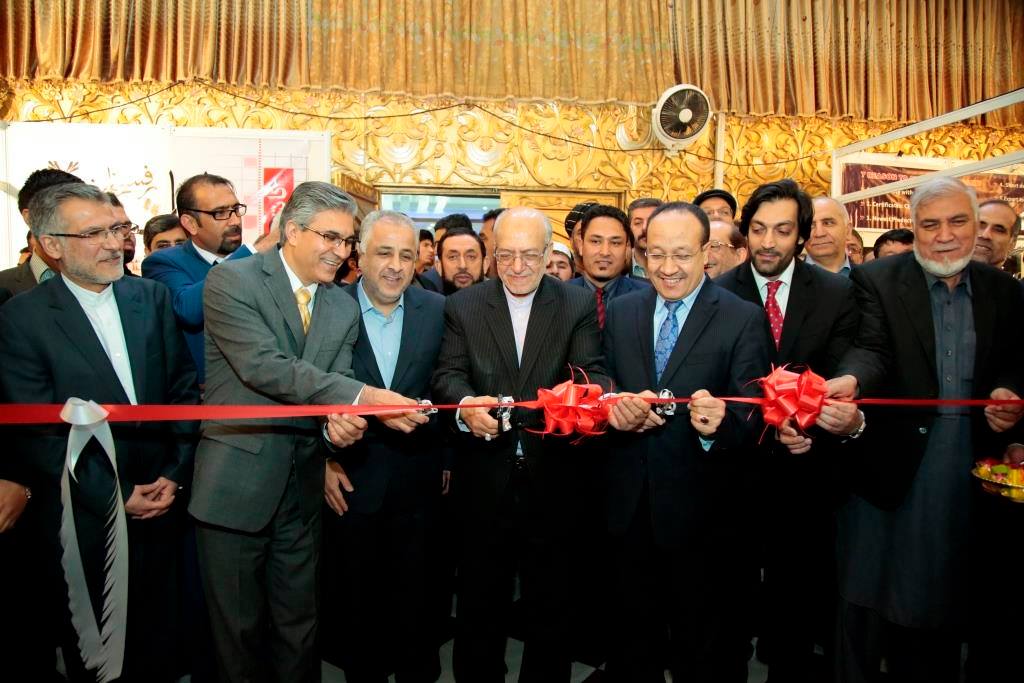With a population of 31 million, 90% of whose demand are sourced from abroad, the Afghan market has for long been an interesting destination for Iranian exporters.
Despite challenges and tough competition posed by other regional countries, the removal of sanctions against Tehran in January—as part of a July 2015 nuclear deal between Tehran and world powers—has paved the way for Iran to increase its presence in the neighboring market.
On Monday, the Persian daily Forsat-e Emrooz interviewed several officials and businesspeople on how Iranian companies could increase their market share in the eastern neighbor.
Gholamhossein Shafei, a board member at Iran Chamber of Commerce, Industries, Mines and Agriculture and former chairman of Iranian-Afghan commerce chamber, said the participation of Iranian firms in ongoing projects that other countries have started in Afghanistan could open new doors to bilateral economic relations.
“There are a lot of ongoing projects in Afghanistan. However, in the past few years, international companies were reluctant to engage with Iranian business due to sanctions that created sensitivities in working with Tehran,” he said.
“The removal of sanctions has provided an opportunity for Iranian companies to collaborate with countries that are running major projects in Afghanistan.”
Shafei noted that domestic companies could supply the raw materials needed in Afghanistan while mobilizing their skilled human resources to work in Afghan projects.
Before the sanctions were lifted, Iranian firms had no opportunity of winning tenders held for Afghan projects. But now there is room for companies to participate in Afghanistan’s construction and infrastructure projects which are mostly run by European companies.
“This will pave the way for Iran to exploit its engineering capacities,” Shafei said.
Mohammad Hossein Kamranfar, Iran’s former commercial attaché in Afghanistan, also stresses the significance of exporting construction services to Afghanistan.
He called on Iranian firms to open offices in Afghan cities and participate in the country’s economic activities not only in the construction sector but also in other potential fields, including agriculture and mining, which Iran has lately focused on as a potential area of cooperation.
Last week, Iran signed an ambitious mining agreement with Afghanistan to take advantage of the country’s “promising” mining sector, according to Minister of Industries, Mining and Trade Mohammad Reza Nematzadeh.
He said Tehran would not only cooperate with Kabul in mineral exploration, extraction and exports, but should also provide the country with mining equipment and machinery.
Afghanistan’s Minister of Mines and Petroleum Daud Shah Saba said Iran has gained “valuable experiences” in the mining sector in the past few decades and that Afghanistan aims to use that experience to further develop its mines and mineral industries.
“A majority of mining projects in Afghanistan have come to a halt,” Kamranfar said, adding that the same thing has happened to Afghan factories due to a lack of equipment and machinery.
This comes against the backdrop of a fierce competition in the Afghan market, which will not leave Iranians with much chance if the current impediments to bilateral cooperation are not overcome.
Transportation, for one thing, is a major issue.
Shafei says lack of proper transit infrastructures has resulted in high costs of transportation between Iran and Afghanistan.
He referred to an unfinished rail link that will connect the city of Torbat-e Heydarieh in Iran’s eastern Khorasan Razavi Province to the city of Herat in western Afghanistan.
The project, when completed, could mark a turning point in transportation between the two countries.
Afghanistan was lately accepted as a full member of World Trade Organization. That means tariffs on commodities imported from many countries to Afghanistan are set to be cut. This is while the country has imposed excessively high tariffs on products transported from Iran.
“If this trend persists, we will lose the market in the not-too-distant future,” said Mohammad Reza Mikhchi, businessman and former board member at ICCIMA.
He urged investment companies, particularly the Export Guarantee Fund of Iran, to provide exporters with cheap loans so that they can reduce costs and maintain a competitive edge in the Afghan market.
In some sectors, however, Iran has the upper-hand compared to European rivals. Besides hundreds of kilometers of common border, both countries share the same language and enjoy religious and cultural commonalities which, according to Kamranfar, can be well exploited to the benefit of Iranian traders.
More than 100 Iranian companies active in the fields of construction and engineering, food production, household appliances, livestock and poultry, textile, carpets, automotive, mining, petrochemical, cosmetics, telecommunications, medicine, tourism and aeronautics participated in Iran’s third exclusive trade exhibition in Kabul from March 2-5.
Among the participants were the two major Iranian auto manufacturers, Iran Khodro and SAIPA. Chabahar Free Trade Zone and Birjand Special Economic Zone also introduced their potentials for joint cooperation with Afghanistan.
Iran’s commercial attaché in Afghanistan, Mohammad Reza Karimzadeh, said on Monday the exhibition has helped 70% of the participant companies find Afghan business partners, which means the export of Iranian products to the neighboring country will soon increase.


